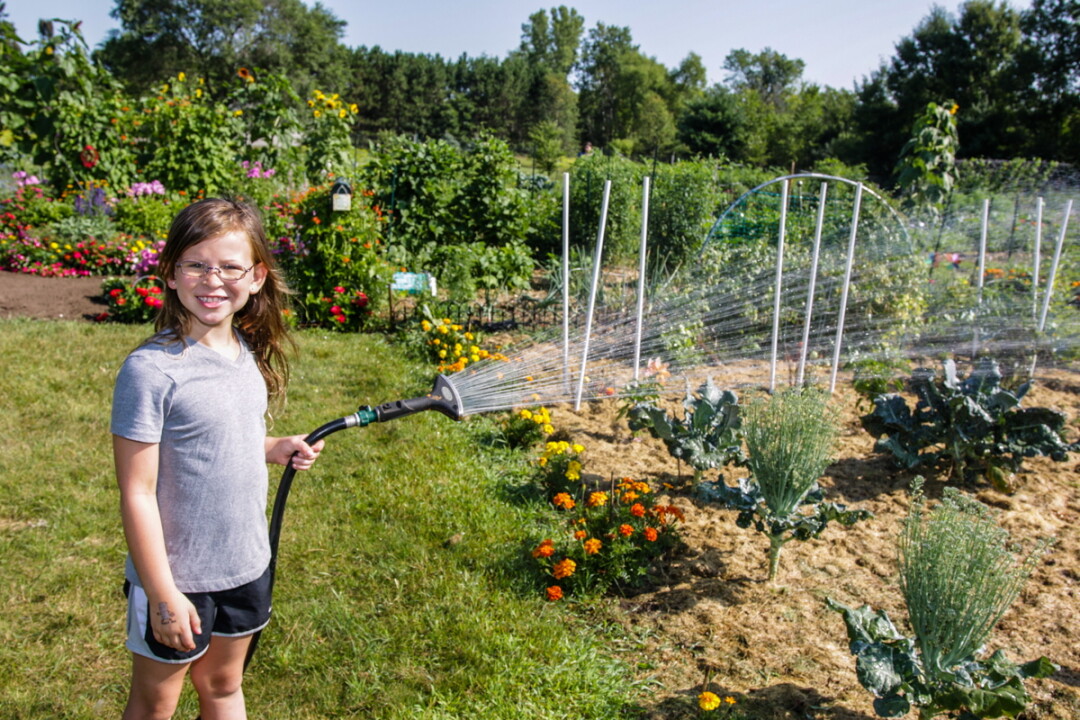Planting Seeds to Grow a Green Thumb
now is the perfect time to teach kids about starting plants
Starting seeds with kids can be anything from a simple day’s project of getting beans to sprout little green threads to creating an attractive splash of flowers in a porch pot to carefully laying a foundation for a vegetable plot designed to feed the world. It’s a messy and magical project that can be pulled off for a few dollars worth of supplies and invented equipment or with a slick set of the latest gadgets. Whatever way you do it, you still get to smell the spring thrill of wet soil and green leaves while everything outside is still locked up in ice. Here’s what you need:
Seeds
Choosing what to plant will depend a lot on what you and your kids are up for. Good plants for beginners to try might be flowers such as sunflowers, marigolds, or zinnias. Sunflowers are popular for very little kids because the seeds are big, easy to handle, and sprout in less than a week. If you’re thinking veggies, salad greens, zucchini, green beans, and cherry tomatoes are all good options for beginners. Think about where the grown-up plants are going to go, and always start more of them than you need.
Light
You can sprout your seeds without extra light, but as soon as they pop you’re going to need a lot of it. You can get away with using a south-facing sunny window for a low-key project like a sunflower in a cup. For plants destined for the garden, a fluorescent tube light fixture suspended a few inches over your seedlings is perfect. They’ll need 12-15 hours of light a day, and the lights will need to be raised as the plants grow, keeping them a few inches above the leaves. Too little light and the plants are going to be pale, spindly, and weak (think Pee-Wee Herman but with less gumption). Leave an open outlet in your extension cord for a fan. Set it to blow gently near the seedlings but not on them to strengthen the stems and to keep them healthy.

Soil
Don’t actually use garden soil. Get some soil-less seed starting mix: It’s easier on the tiny new roots and isn’t full of bugs, weed seeds, and bacteria. You can plant your seeds in empty toilet paper rolls, disposable cups, egg crates, tin cans, etc., or you can go pro and drop some cash on plastic flats. Whatever pots you use need drainage holes. If they don’t have them, then cut some that you can fit a pencil through. Give them a wipe with a weak bleach solution to kill bacteria. Get the soil nice and moist, put it into your pots, and plant your seeds as deep as the packet says to (usually three times the thickness of the seed).
Water
The newly planted seeds need to stay moist and warm until they sprout. The best way to do this is to put them somewhere warm and cover them very loosely with plastic wrap, propping it up on supports to keep the plastic from touching any seedlings. Once the seeds have sprouted, remove the plastic to head off mold and fungus growth and don’t wet the leaves while watering. Keep the soil lightly moist. You don’t want the soil to be powder, but neither do you want flooded slurry.
Those are the nuts and bolts, but making the project yours is entirely up to you. Kids can decorate the pots, label the plants, track growth, calculate yields, tend sprouts, fill pots, draw leaves, count seeds, design flower layouts, or write poetry to the smell of wet earth – whatever they love to do. And if after all this you are hugely successful in your seed starting and wind up with too many plants, local community gardens often take donations of vegetable starts. Or if you’re feeling your thumb going green, you could rent a garden plot from them for the growing season and see where your little seeds take you.


















